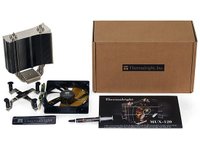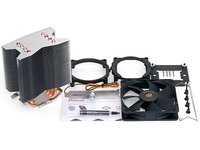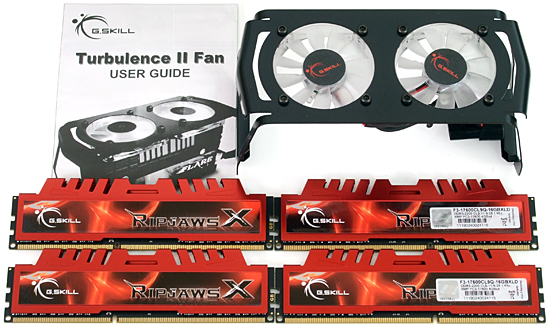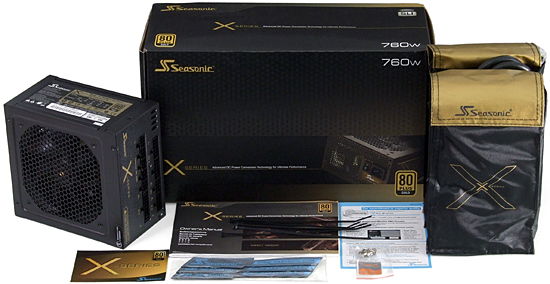FX Vs. Core i7: Exploring CPU Bottlenecks And AMD CrossFire
AMD and Intel continue serving up increasingly faster CPUs. But graphics card performance is accelerating even faster. Is there still such a thing as processor-bound gaming? We take two Radeon HD 7970s, high-end desktop CPUs, and a few games to find out.
Test Settings And Benchmarks
We began our testing with an older boxed Core i7-3770K as we waited for the FX-8350 we purchased. Relatively certain the AMD processor would hit at least 4.4 GHz without thermal issues, we started off Intel's processor at the same clock rate. Later, it became clear that our estimate was too conservative, as both CPUs exceeded 4.5 GHz at our chosen voltage levels.
Retesting at higher frequencies would have further delayed this story, so we stuck with 4.4 GHz on both the Intel and AMD chips, at least in the clock-matched portion of our benchmarking.
| Test System Configuration | |
|---|---|
| Intel CPU | Intel Core i7-3770K (Ivy Bridge): 3.5 GHz, 8 MB Shared L3 Cache, LGA 1155 Overclocked to 4.4 GHz at 1.25 V |
| Intel Motherboard | Asus Sabertooth Z77, BIOS 1504 (08/03/2012) |
| Intel CPU Cooler | Thermalright MUX-120 w/Zalman ZM-STG1 Paste |
| AMD CPU | AMD FX-8350 (Vishera): 4.0 GHz, 8 MB Shared L3 Cache, Socket AM3+ Overclocked to 4.4 GHz at 1.35 V |
| AMD Motherboard | Asus Sabertooth 990FX, BIOS 1604 (10/24/2012) |
| AMD CPU Cooler | Sunbeamtech Core-Contact Freezer w/Zalman ZM-STG1 Paste |
| RAM | G.Skill F3-17600CL9Q-16GBXLD (16 GB) DDR3-2200 CAS 9-11-9-36 1.65 V |
| Graphics | 2 x MSI R7970-2PMD3GD5/OC: 1010 MHz GPU, GDDR5-5500 |
| Hard Drive | Mushkin Chronos Deluxe DX 240 GB, SATA 6Gb/s SSD |
| Sound | Integrated HD Audio |
| Network | Integrated Gigabit Networking |
| Power | Seasonic X760 SS-760KM: ATX12V v2.3, EPS12V, 80 PLUS Gold |
| Software | |
| OS | Microsoft Windows 8 Professional RTM x64 |
| Graphics | AMD Catalyst 12.10 |
Great performance and quick installation have kept Thermalright’s MUX-120 and Sunbeamtech’s Core Contact Freezer on my shelf for several years. The brackets that came with these older samples make them non-interchangeable, however.


G.Skill’s F3-17600CL9Q-16GBXLD has a remarkable DDR3-2200 CAS 9 rating, using Intel XMP technology for semi-automatic configuration. As a non-Intel platform, the Sabertooth 990FX configures XMP values through Asus' DOCP setting.
Seasonic’s X760 provides the consistent efficiency required to assess platform power differences.
StarCraft II doesn’t support AMD's Eyefinity technology, so I looked at the recent work of our other editors before bringing back a few classics in today’s test: Aliens vs. Predator and Metro 2033.
| Benchmark Configuration (3D Games) | |
|---|---|
| Aliens vs. Predator | Using AvP Tool v.1.03, SSAO/Tesselation/Shadows On Test Set 1: High Textures, No AA, 4x AF Test Set 2: Very High Textures, 4x AA, 16x AF |
| Battlefield 3 | Campaign Mode, "Going Hunting" 90-Second Fraps Test Set 1: Medium Quality Defaults (No AA, 4x AF) Test Set 2: Ultra Quality Defaults (4x AA, 16x AF) |
| F1 2012 | Steam version, in-game benchmark Test Set 1: High Quality Preset, No AA Test Set 2: Ultra Quality Preset, 8x AA |
| The Elder Scrolls V: Skyrim | Update 1.7, Celedon Aethirborn Level 6, 25-Second Fraps Test Set 1: DX11, High Details No AA, 8x AF, FXAA enabled Test Set 2: DX11, Ultra Details, 8x AA, 16x AF, FXAA enabled |
| Metro 2033 | Full Game, Built-In Benchmark, "Frontline" Scene Test Set 1: DX11, High, AAA, 4x AF, No PhysX, No DoF Test Set 2: DX11, Very High, 4x AA, 16x AF, No PhysX, DoF On |
Get Tom's Hardware's best news and in-depth reviews, straight to your inbox.
Current page: Test Settings And Benchmarks
Prev Page Chasing Bottlenecks To Eyefinity (But Not Beyond) Next Page Results: 3DMark, Aliens Vs. Predator, And Metro 2033-
A Bad Day ReplyWe were hoping that AMD's Piledriver update would break that trend, but even a handful of impressive advancements aren't enough to match the effectiveness of AMD's graphics team. Might Steamroller be the evolutionary step forward needed to unleash the GCN architecture's peak performance?
I disagree. What's needed is even stronger push on the developers to use more than four cores, effectively, not some 100% load on one core and 10% on the other five cores. -
acktionhank Great article and very informative. The FX-8350 really held it's own until it came down to Skyrim.Reply
A Bad DayI disagree. What's needed is even stronger push on the developers to use more than four cores, effectively, not some 100% load on one core and 10% on the other five cores.
I thought more cores were for multi-tasking, as in having multiple programs running simultaneously. It would suck to turn on BF3 and everything else running on my PC simply shut down because the CPU is under 100% utilization. How would i be able to play BF3 while streaming/playing some HD content on my TV that's hooked up to my same computer.
-
alidan acktionhankGreat article and very informative. The FX-8350 really held it's own until it came down to Skyrim.I thought more cores were for multi-tasking, as in having multiple programs running simultaneously. It would suck to turn on BF3 and everything else running on my PC simply shut down because the CPU is under 100% utilization. How would i be able to play BF3 while streaming/playing some HD content on my TV that's hooked up to my same computer.Reply
single core performance... look up some other benchmarks, where they use itunes to encode things, or when i believe winzip went from single core to multicore, it shows a GREAT difference more cores can do to performance.
the problem is that few games and few programs really scale, sure, pro applications almost always take advantage of whatever you put in them, but consumer, different story.
more cores can offer more multitasking, but they also allow the load to be shifted from one core to all 4 cores and get over all more performance when properly coded. -
Someone Somewhere Personally I'd like to see the i5-3570K included in here. It's closer in price to the 8350, but should perform more like the 3770K (as the games are unlikely to use more than 4 threads).Reply -
Crashman A Bad DayI disagree. What's needed is even stronger push on the developers to use more than four cores, effectively, not some 100% load on one core and 10% on the other five cores.I'm calling BS on this one because AMD's "eight cores" are actually four modules, on four front ends, with four FP units. Games have historically been limited by FP units specifically and front ends in general, no? What I'm seeing is that Intel's per-core IPC appears to be a little higher, when two different FOUR "full" CORE processors are compared.Reply -
de5_Roy like the article.Reply
woulda liked to see how a 3570k does against the fx8350 running the same cfx setup. impo, the price/perf woulda tipped further in favor of intel in configs like this.
lastly, woulda liked some newer games like sleeping dogs, far cry3, max payne 3 in the benches instead of the ol' bf3 single player. i hear bf3 sp doesn't stress cpus that much. may be bf3 skewed the benches in favor of amd as much as skyrim favored intel. :whistle: -
quark004 all these benchmarks are manipulated. First, there is this site which claims the 7900 series does well even with mid level cpus in gaming scenarios. And now toms claim a high end cpu. There is some propoganda here.Reply -
abbadon_34 It would be nice to see prices for components similar the SMB. Not because I can't look them up, but because the article is very price/performance orientedReply


